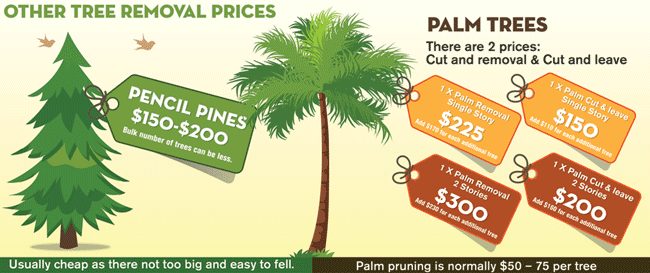Seasonal Tree Stewardship: Techniques For Correctly Handling Trees Prior To And After They Are Removed
Seasonal Tree Stewardship: Techniques For Correctly Handling Trees Prior To And After They Are Removed
Blog Article
Personnel Author-
When it concerns seasonal tree treatment, guaranteeing appropriate monitoring before and after removal can substantially affect the health and wellness and aesthetic appeals of your landscape. By comprehending the necessary steps involved in evaluating tree health and getting ready for elimination, you can proactively protect your property. But what regarding the important methods to comply with when the tree is gone? Stay tuned to find the necessary post-removal treatment measures that will assist you cultivate a thriving and lasting atmosphere for your trees.
Pre-Removal Tree Care
Prior to attending to the removal of a tree, it's critical to prioritize pre-removal tree treatment. Beginning by analyzing garden tidy up auckland and architectural honesty. Search for indicators of disease, bug problems, or any architectural problems that might posture a safety and security danger during removal. It's vital to consult with a licensed arborist to establish the most effective course of action.
Trimming tree service or unhealthy branches can prevent additional damages to the tree and guarantee a smoother elimination procedure.
In addition, take into consideration the ecological impact of eliminating the tree. Trees play an important role in our ecosystem, so growing a new tree in an appropriate area can aid offset any loss. Guarantee that you have the necessary licenses and permissions for tree elimination, particularly if the tree is secured by regional regulations.
Seasonal Maintenance Tips
Assessing your tree's requirements throughout the year is crucial for its wellness and durability. To keep your trees in top condition, comply with these seasonal upkeep tips.
In spring, concentrate on pruning to eliminate dead or broken branches and motivate new growth.
Summer season calls for regular watering, particularly during dry spells, to ensure your tree stays hydrated.
As fall approaches, keep an eye out for early indicators of illness or stress and anxiety, and take into consideration applying mulch to protect the origins throughout wintertime.
In winter season, beware when removing snow from branches to prevent damage, and continue to monitor your tree's general health and wellness.
Keep in mind to readjust your care routine based upon the particular needs of your tree types and local climate. By remaining alert and positive throughout the seasons, you can aid your trees flourish and flourish for years to come.
Post-Removal Tree Treatment
To make certain the wellness of your landscape even after tree elimination, correct post-removal care is necessary. After a tree is gotten rid of, it's critical to fill up the staying opening with topsoil and portable it to stop settling. This will certainly aid maintain the integrity of the ground and protect against possible hazards in the future.
Consider planting brand-new plant life instead of the eliminated tree to restore the equilibrium and appearances of your landscape. Consistently water the area to promote the growth of new plants and stop soil disintegration.
Inspect the bordering trees for any kind of signs of disease or stress that might have been caused by the removed tree. Watch out for insects that may've been attracted to the previous tree and take preventive measures to protect the continuing to be plant life.
If needed, speak with a professional arborist to examine the influence of the removal on the bordering trees and determine any kind of added treatment required. By following these post-removal treatment actions, you can guarantee the ongoing health and wellness and charm of your landscape.
Conclusion
In conclusion, proactive seasonal tree care is crucial for maintaining the health and equilibrium of your landscape. By analyzing tree health, pruning, and speaking with an arborist before elimination, you can ensure a risk-free procedure. After removal, filling the hole, growing new vegetation, and routine watering will promote new growth and prevent disintegration. Keep in mind to inspect surrounding trees for disease and seek additional care steps from an arborist to maintain your landscape growing.
